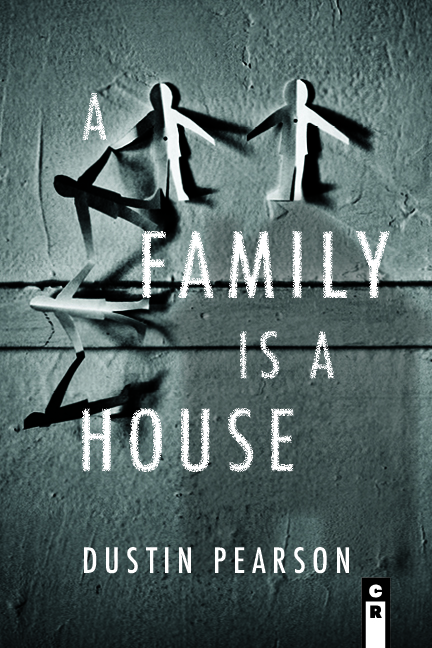A Family is a House
by Dustin Pearson
MEET THE AUTHOR
We asked Dustin Pearson two questions. Why did you write A Family is a House, and why do you write poetry?
“I wrote A Family Is a House because I wanted to show how disorienting growing an awareness of violence can be. I’m still learning.”
–Dustin Pearson
“I write poetry so my expectations can remain high. My mind is a wild place, and poetry lets me project my own world.”
–Dustin Pearson
Visible Poetry Project Film for National Film Month
The Root
The Front Porch Podcast
ABOUT A Family is a House
Pearson’s debut Millenial Roost, with an introduction by Jericho Brown, introduced us to a master transmogrifier. In this surreal follow-up collection he investigates the architectural implications of inheritance—how the human body houses the violence of its forebears. A Family Is a House is a blueprint, a guide to the logical structures and spaces we build in our minds: sometimes to keep our secrets in, sometimes to keep the horrors out. Pearson offers us an answer to the toughest question: what happens when our secrets are our horrors? We build, compartmentalize, and quarantine. We refract, reflect, demolish, and burn. This is a book about the oldest partition—that thin wall between the dark and the light. This is a book about bravery, about severing oneself from a lineage of abuse. When the hands that feed us also beat us, we must beat them back with the gifts we’ve been given. Through Pearson, we relearn that language can be weaponized into a kind of magic that saves us.
A LOOK INSIDE A Family is a House
Blood at the Beach
Circumstances make us a car of three
that day. I confuse the crabbing trip
on the muddy dunes for family day
at the beach. The flip-flops I wear
on my feet make my missteps
heavier, each sunken foot harder
to pull up. Even when I’ve let the Earth
eat both of my shoes, it refuses to give
my balance back, only the support
of the open oyster shells to lodge
where my heel looks to support me
when I fall. I lift my foot quickly,
but the cut is already deep. I don’t
look where I feel the pain instantly,
only where the blood trails snakelike
through the mud into the salty sea.
It doesn’t take long for the parents
to see. Only one comes running.
While she’s still far out, I watch
as blood makes the ocean smoky
and soft. As more goes, the billowy,
creamy cloud it creates storms off,
resigning a small volume of that body
to disposition. Even though it’s vitals
of my own body, I continue to watch.
Do nothing. Imagine all of the oceans
murky and blood thick.
PRAISE
“In Dustin Pearson’s A Family Is a House we are gifted with a new surreal pantheon dissecting the mythology that arises from family. A brother’s tail that grows uncontrolled across a neighborhood. A mother who becomes a furnace, burning everything in her path. A father who leaves drippings of flesh for his children. In this stunning collection the violence and terror are palpable – we’ve known it in our homes, we know it in our nation. This book is an incredible, visceral experience from one of the most striking and necessary voices in poetry today.”
–Glenn Shaheen
“In Dustin Pearson’s new book a sibling is said to have a tail so long it can be wrapped twice around the house, and a mother’s mouth is likened to a stove that her children stoke with wood. One might want to say these images are surreal, but the Pearson speaker speaks strange things so believably that there is no way to take them as anything other than the literal truth. Here, figuration is no excuse and no escape. I think of the fearlessness of Sharon Olds, and I think of the biological horror of David Cronenberg, and I think it’s all Dustin Pearson, laconic but lush, straight-faced in the panic.”
–Josh Bell
“Dear reader, you will see the ways that nothing works in the house this family builds, this house of absence and abuse, where the brothers hold themselves together as they “take / their spreading bruises and scabs outside / and try to make nothing from them.” In Pearson’s poems, the boys—knowing nothing else—don’t especially recognize their pain, speak lightly of their fears, and endure with devastating calm the “blind slither to nowhere” that is their father’s gentlest path. Pearson’s boys suffer and survive in real and surreal ways: despite everything, they “follow [their] dad everywhere,” and then they find that their father “follow[s] them into mirrors.” The poems reckon with both masculinity and the imagination, the way the latter might intensify our fears, might also lift us through and beyond them.”
–Sally Ball










